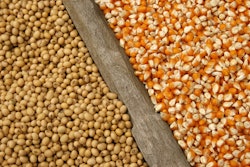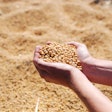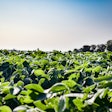
Animal protein production will continue to grow in 2024, but at a slower pace, according to a new report from Rabobank.
“Slower production growth, given tight margins on elevated input costs, disease and weather challenges, and uncertain consumer sentiment amidst an uncertain macro-economic outlook, set the scene heading into 2024,” Rabobank said in its “Global animal protein outlook 2024” report.
The slower pace of growth is due to tight margins most animal protein companies have experienced for more than a year, the report said. While some market conditions are expected to improve in the next year, others are structural rather than cyclical in nature and will add to ongoing costs and changes. This will create opportunities and some risks for the industry.
“Not all structural changes in the market are detrimental – many present new opportunities for businesses to improve their processes and products,” said Justin Sherrard, global strategist animal protein at Rabobank. “Those companies that can demonstrate agility in adapting to the new environment and navigate consumer willingness to pay for certain preferences will be able to take advantage of the tighter market and come out on top.”
For example, new investment will be needed to improve productivity and to upgrade production systems to meet emerging market and regulatory requirements and consumer preferences, such as around sustainability.
To sustain success, Rabobank said, animal protein companies should double down on efforts to improve productivity, consider strengthening their supply chain partnerships, review their portfolios, increase investment in new product development and adjust their pricing strategies to the higher cost base.
“For companies to sustain the success of the past few years, it’s essential that they adapt to the structural changes in the market,” Sherrard said. “Instead of simply riding out the storm, animal protein businesses need to take stock of their strengths and prepare to transition their supply chains to operating in an environment with high costs and tight margins.”
Factors affecting various species, regions
Beef, pork and wild catch seafood are down, while poultry and aquaculture are seeing the strongest growth, albeit modest. In North America, poultry is benefiting from consumer preferences and beef production continues to contract. Brazil leads production growth, with production expected to grow for all species; pork will grow the fastest, followed by poultry. In China, pork and beef markets are under the most pressure, and poultry is best placed.
Disease risks including African swine fever (ASF) and highly pathogenic avian influenza, among other factors, will put pressure on all species across Europe, while easing of disease pressures in Southeast Asia should contribute to production growth in 2024. In the latter region, although pressure from ASF outbreaks continues, pork leads growth, followed by poultry.
Along with disease risks, other issues facing the animal protein industry in 2024 will be changing consumption patterns, El Niño, global trade challenges, and sustainability and traceability. El Niño is expected to create supply pressures and bring with it more challenges than opportunities. Global trade will be challenged by biosecurity, climate, protectionism and geopolitical factors.












